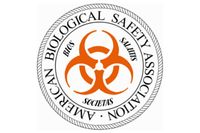Matt entered the research field over 20 years ago as a lab animal technician at the TSI/Mason contract research facility. He has worked at both contract facilities such as TSI and OREAD Biosafety as well in industry at Pharmacia, Pfizer, and Sanofi-Aventis. During that period he ...
See moreProgram Committee Share
-
Matthew Flegal
-
Jonas Korlach
Jonas Korlach was appointed Chief Scientific Officer of Pacific Biosciences in July 2012. He was previously a Scientific Fellow, supporting commercial development of the PacBio RS II system and performing research aimed at developing new applications for SMRT technologies. He ...
See more
Infectious Disease Virtual Event Series 2019


This event is now apart of the Microbiology Week Virtual Event Series.
Our 1st Annual Event in the Infectious Disease Virtual Event Series 2019 is now available On-Demand! The event will remain open 6 months from the date of the live event. The webinars will be available for unlimited on-demand viewing.
Topic's for this years event included:
- Stories and Lessons of the Past
- Current Challenges and Controversies
- Emerging Tools and Methods
Continuing Education
LabRoots is approved as a provider of continuing education programs in the clinical laboratory sciences by the ASCLS P.A.C.E. ® Program. By attending this event, you can earn 1 Continuing Education credit per presentation for a maximum of 14 credits.
Use #LRinfectious to follow the conversation!
Agenda Share
-
APR 25, 2019 1:30 PM PDT
In Vivo Models for Infectious Disease Research Through the Years
-
APR 25, 2019 12:00 PM PDT
Diagnosis and Treatment of Tuberculosis, a Case Study in Challenges and Threats Posed by Infectious Diseases
Faramarz Valafar, PhD
Director & Professor, Biomedical Informatics Research Center, Laboratory for Pathogenesis of Clinical Drug Resistance and Persistence, San Diego State UniversityBIOGRAPHY -
APR 25, 2019 10:30 AM PDT
Advances in Point-Of-Care Testing for Infectious Diseases
Krishnan Allampallam, PhDGlobal Marketing Director, Chembio Diagnostic SystemsPaul Lambotte, PhDVice President, Research & Development, Chembio Diagnos... -
APR 25, 2019 10:30 AM PDT
Overcoming Complexity to Elucidate the Role of Immunoglobulin Polymorphism in the Functional Antibody Response
Corey T. Watson, PhD
Assistant Professor, Department of Biochemistry and Molecular Genetics, University of Louisville School of MedicineBIOGRAPHY -
APR 25, 2019 9:00 AM PDT
Keynote Presentation: The Next Pandemic
Stephen S. Morse, PhD, FAAM, F.A.C.E.
Professor of Epidemiology, Director, Infectious Disease Epidemiology Certificate, Columbia University, Mailman School of Public HealthBIOGRAPHY -
APR 25, 2019 7:30 AM PDT
Keynote Presentation: Ebola Virus Disease - 2019 and Beyond
Colleen Kraft, MD, MSc
Associate Professor, Pathology & Laboratory Medicine, Emory University School of MedicineBIOGRAPHY -
APR 25, 2019 6:00 AM PDT
Is Bacterial Vaginosis a Sexually Transmitted Infection?
Christina A. Muzny, MD, MSPH, FACP
Associate Professor of Medicine and Epidemiology, Division of Infectious Diseases, University of Alabama at BirminghamBIOGRAPHY -
APR 25, 2019 6:00 AM PDT
Long-Read Sequencing and Infectious Disease: New Insights Into Longstanding Challenges
Meredith Ashby, PhD
- Current Challenges and Controversies
-
APR 25, 2019 6:00 AM PDT
Is Bacterial Vaginosis a Sexually Transmitted Infection?
Christina A. Muzny, MD, MSPH, FACP
Associate Professor of Medicine and Epidemiology, Division of Infectious Diseases, University of Alabama at BirminghamBIOGRAPHY -
APR 25, 2019 9:00 AM PDT
Keynote Presentation: The Next Pandemic
Stephen S. Morse, PhD, FAAM, F.A.C.E.
Professor of Epidemiology, Director, Infectious Disease Epidemiology Certificate, Columbia University, Mailman School of Public HealthBIOGRAPHY -
APR 25, 2019 10:30 AM PDT
Overcoming Complexity to Elucidate the Role of Immunoglobulin Polymorphism in the Functional Antibody Response
Corey T. Watson, PhD
Assistant Professor, Department of Biochemistry and Molecular Genetics, University of Louisville School of MedicineBIOGRAPHY -
APR 25, 2019 12:00 PM PDT
Diagnosis and Treatment of Tuberculosis, a Case Study in Challenges and Threats Posed by Infectious Diseases
Faramarz Valafar, PhD
Director & Professor, Biomedical Informatics Research Center, Laboratory for Pathogenesis of Clinical Drug Resistance and Persistence, San Diego State UniversityBIOGRAPHY - Emerging Tools and Methods
-
APR 25, 2019 6:00 AM PDT
Long-Read Sequencing and Infectious Disease: New Insights Into Longstanding Challenges
Meredith Ashby, PhD
-
APR 25, 2019 10:30 AM PDT
Advances in Point-Of-Care Testing for Infectious Diseases
Krishnan Allampallam, PhDGlobal Marketing Director, Chembio Diagnostic SystemsPaul Lambotte, PhDVice President, Research & Development, Chembio Diagnos... - Stories and Lessons of the Past
-
APR 25, 2019 7:30 AM PDT
Keynote Presentation: Ebola Virus Disease - 2019 and Beyond
Colleen Kraft, MD, MSc
Associate Professor, Pathology & Laboratory Medicine, Emory University School of MedicineBIOGRAPHY -
APR 25, 2019 1:30 PM PDT
In Vivo Models for Infectious Disease Research Through the Years
Speakers Share
-
Colleen Kraft, MD, MSc
Associate Professor, Pathology & Laboratory Medicine, Emory University School of Medicine
BIOGRAPHY
-
Stephen S. Morse, PhD, FAAM, F.A.C.E.
Professor of Epidemiology, Director, Infectious Disease Epidemiology Certificate, Columbia University, Mailman School of Public Health
BIOGRAPHY
-
Krishnan Allampallam, PhD
Global Marketing Director, Chembio Diagnostic Systems
BIOGRAPHY
-
Meredith Ashby, PhD
Director, Market Strategy for Microbial and Cancer Genomics, Pacific Biosciences
BIOGRAPHY
-
Matthew Flegal, BS, SRS
Associate Director, Charles River Laboratories
BIOGRAPHY
-
Paul Lambotte, PhD
Vice President, Research & Development, Chembio Diagnostic Systems
BIOGRAPHY
-
Christina A. Muzny, MD, MSPH, FACP
Associate Professor of Medicine and Epidemiology, Division of Infectious Diseases, University of Alabama at Birmingham
BIOGRAPHY
-
Faramarz Valafar, PhD
Director & Professor, Biomedical Informatics Research Center, Laboratory for Pathogenesis of Clinical Drug Resistance and Persistence, San Diego State University
BIOGRAPHY
-
Corey T. Watson, PhD
Assistant Professor, Department of Biochemistry and Molecular Genetics, University of Louisville School of Medicine
BIOGRAPHY
-
American Biological Safety Association
The American Biological Safety Association (ABSA) was founded in 1984 to promote biosafety as a scientific discipline and serve the growing needs of biosafety professionals throughout the world. The Association's goals are to provide a professional association that represents the ...
See more
Event Series

Microbiology Virtual Event Series 2026

Microbiology Virtual Event Series 2025

Microbiology Week Virtual Event Series 2024

Microbiology Week Virtual Event Series 2023

Microbiology Week Virtual Event Series 2022

Microbiology Week Virtual Event Series 2021

Microbiology Week Virtual Event Series 2020

Influenza Virtual Event Series 2019

Microbiology & Immunology Virtual Event Series 2019

Microbiology & Immunology Virtual Event Series 2018

Microbiology & Immunology Virtual Event Series 2017

Microbiology & Immunology Virtual Event Series 2016








































